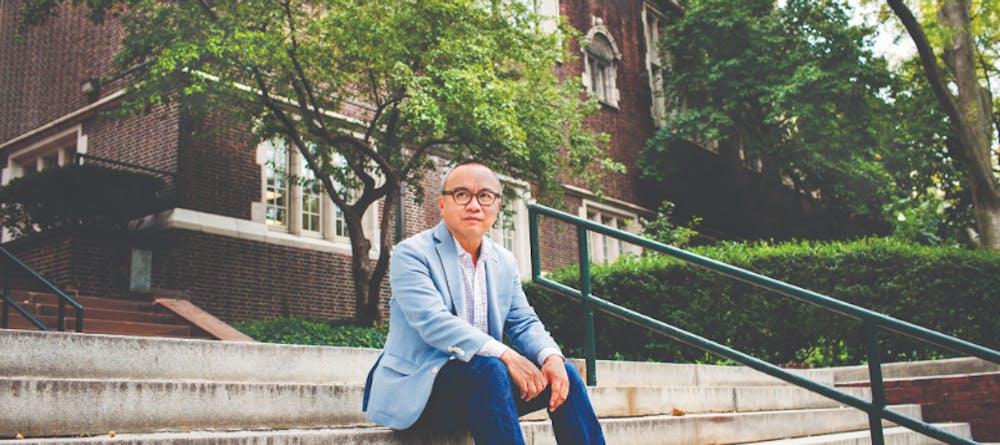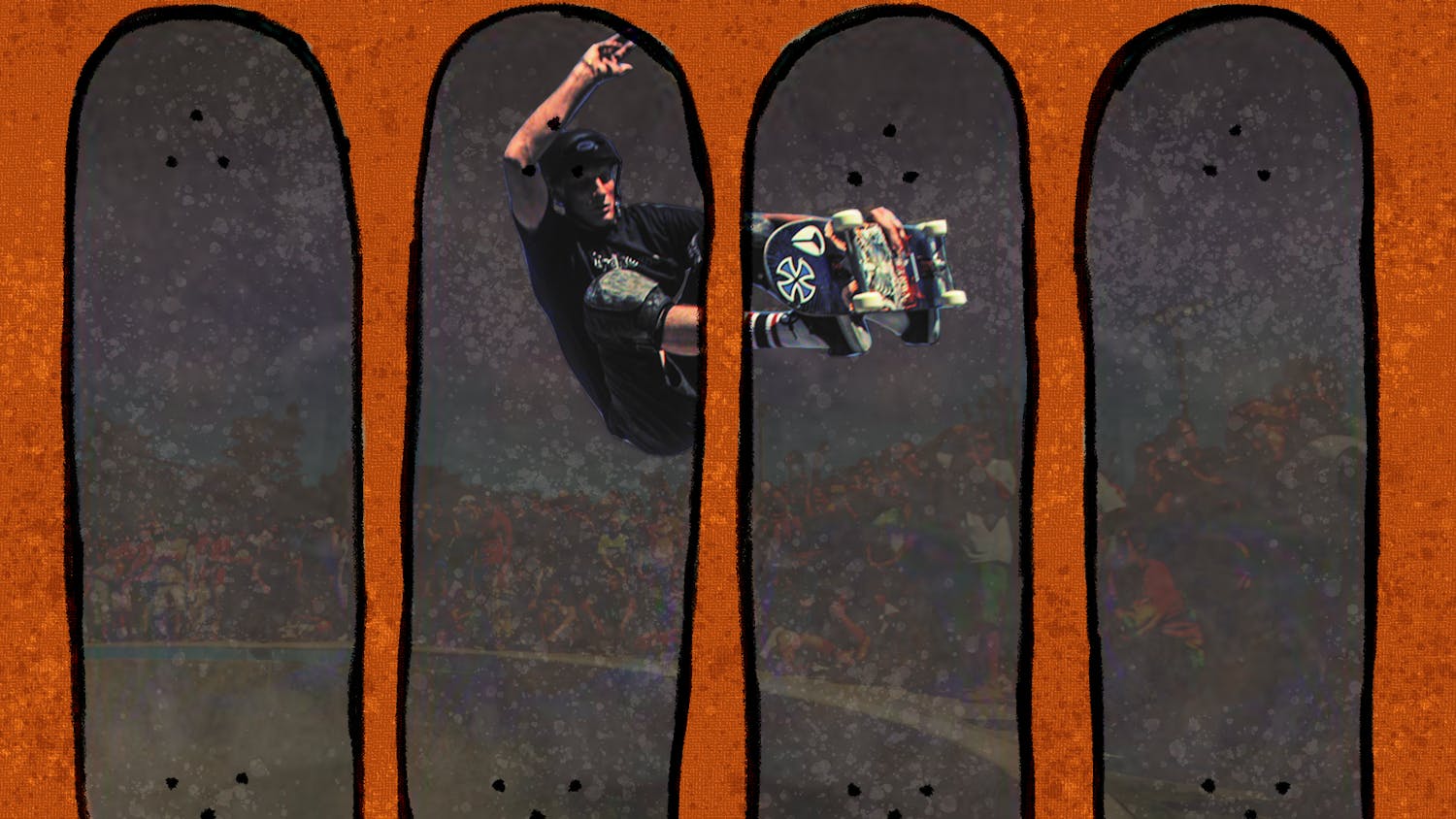He was the co–curator of Monument Lab. He’s an Officer in the Order of Canada. He has exhibited from one end of the world to another, crossing Sydney, Sāo Paolo, Shanghai, and so much more. This is Professor Ken Lum: Professor and Chair of the Fine Arts department, artist, curator, and educator.
In a light periwinkle jacket and pants in the same shade of blue, he sits opposite the table. “I’m kind of a badly behaved artist. I don’t believe in the system of art. I don’t believe in any system.” And his words seem to adhere to his reality. While most artists concentrate on a specific medium or have that one theme threading together the individual pieces, Lum does everything. Not a jack–of–all–trades, master–of–none, but a master–of–all–trades.

Photo Courtesy of Ken Lum
Inside the classroom, Lum is the kind of professor described by many students as one of those you don’t just want to do the work for, but one of the rare ones you want to impress. His eloquence and wisdom transcend fine arts, bleeding into life lessons sure to stay with the students past graduation.
It’s no surprise that outside the classroom, he is no different. His artwork is a combination of three main concepts that underlie his pieces: “1) the formation of the subject and how we are constituted, 2) the propensity towards the reflected mirror and use of texts, and 3) the operations of the image.” With these three questions always at the back of his mind, his exhibits have gained international acclaim. He’s participated in the Carnegie International, the Shanghai Biennale, the Moscow Biennale, and, of course, closer to home, at the Rosenwald–Wolf Gallery at the University of the Arts in Philadelphia. Just to name a few.
Like many artists, Lum’s work is part–biographical. Coming from a working–class Western–Canadian Cantonese–speaking background, a good amount of art has focused on issues of identity. In particular, it was a “petit-bourgeois environment, meaning that there was a myriad of people struggling to improve their financial position, but always living daily with the risk of completely losing what little they had.” In that sense, his art has been what he described as “a visual cacophony of the street—not the street of Rodeo Drive, but the street of the working class.” It’s the intersection and crossing that he does to “distill and capture the character of the street and bringing it in the context of the gallery.”
One of his pieces exemplifying this tension is a monument to East Vancouver, titled “East Van Cross.” Adopted as a city icon, the piece is a cross formed by the words “East” and “Van,” the “Van” being short for Vancouver and “East” referencing the city’s comparatively less wealthy Eastern half. The symbol had been sprawled across the city for several decades in graffiti, meant to express the marginality of the East. Lum’s transformation of the graffiti art into a 57 foot sculpture overlooking an otherwise nondescript part of the city.

Photo Courtesy of Ken Lum
Lum’s work, as he said, “evokes a kind of certainty and confusion, momentary in status. Is it art? Is it non–art?” With many of his pieces being public art, the exhibits always challenge the viewer to rethink their perspectives. To take just one example, “Pi” was installed down a 180 meter long passageway in downtown Vienna, the walls paneled by floor–to–ceiling mirrors with a horizontal line traversing the middle of the mirrors to enumerate the digits of pi. “Pi” displays statistics in the range of the number of people infected with AIDS and the cost of military expenditures.
Yet between all that he’s created and displayed, Lum has also contributed immensely to the other sides of art. During his interregnum periods from art, he’s curated a number of projects, the most notable being Monument Lab, which just occurred this past spring. He wrote prolifically, exploring the art in different regions over an extended stay in the respective regions, such as Shanghai and West Africa.

Photo Courtesy of Ken Lum
What’s next to come? An international dumpling festival in Paris as part of Nuit Blanche, an annual all–night arts festival of pop–up projects. Mirror pieces in acid etch. A lecture in Cleveland. Another project in Cologne, Germany. There’s talks of a Monument Lab 2.
With his success and experience in a diverse number of fields, to students, he says, “if [you] come across any opportunity to test [yourselves] involving self–definition, then you need to take that leap.” It seemed to work pretty well for him.







